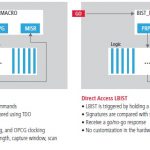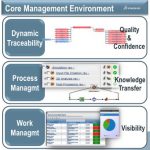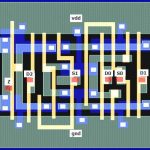Semiconductors and automotive are now like peanut butter and jelly. Certainly you can have one without the other but why would you? I remember when a car first talked to me telling me that the door was ajar. It sounded more like, “the door is a jar” but I got the point. Now my car tells me just about everything including what is wrong with… Read More
Tag: iso 26262
NoC resilience protects end-to-end
Protecting memory with ECC but leaving the rest of an SoC uncovered is like having a guard dog chained up in the back corner of your yard. If the problem happens to be in that particular spot, it’ll be dealt with, otherwise there will be a lot of barking but little actual protection.
Similarly, adding a safety-capable processor like… Read More
Safer SoCs for safer driving
Flip on the TV, and a car commercial is bound to pop up shortly touting one of two technological aspects. One is center stack integration of smartphone-style applications. The other is advanced driver assistance systems (ADAS) featuring cameras, radar, and other sensors helping cars … Read More
Ceaseless Field Test for Safety Critical Devices
While focus of the semiconductor industry has shifted to DACin this week and unfortunately I couldn’t attend due to some of my management exams, in my spare time I was browsing through some of the webpages of Cadenceto check their new offerings (although they have a great list of items to showcase at DAC) and to my pleasure I came across… Read More
Dassault’s Simulation Lifecycle Management
The first thing to realize about Dassault’s Simulation Lifecycle Management platform is that in the non-IC world where Dassault primarily operates, simulation doesn’t just mean functional verification or running Spice. It is anything during the design that produces analytical data. All of that data is important… Read More
Increasing Automotive Semiconductor Test Quality
The growing amount of electronics within today’s automobiles is driving very high quality and reliability requirements to a widening range of semiconductor devices. At the same time, traditional fault models are becoming less effective at achieving desired silicon quality levels. Improvements in test solutions are needed… Read More
10 years, 100,000 miles, or <1 DPM
Auto makers have historically been accused of things like planned obsolescence – redesigning parts to make repairs painfully or even prohibitively expensive – and the “warranty time-bomb”, where major systems seem to fail about a week after the warranty expires. Optimists would chalk both those up to relentless innovation,… Read More






